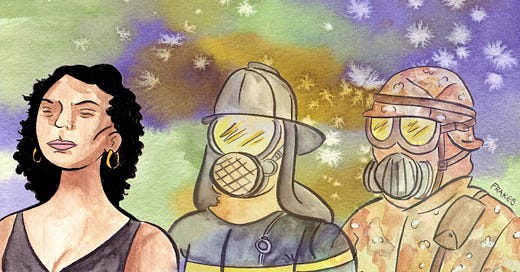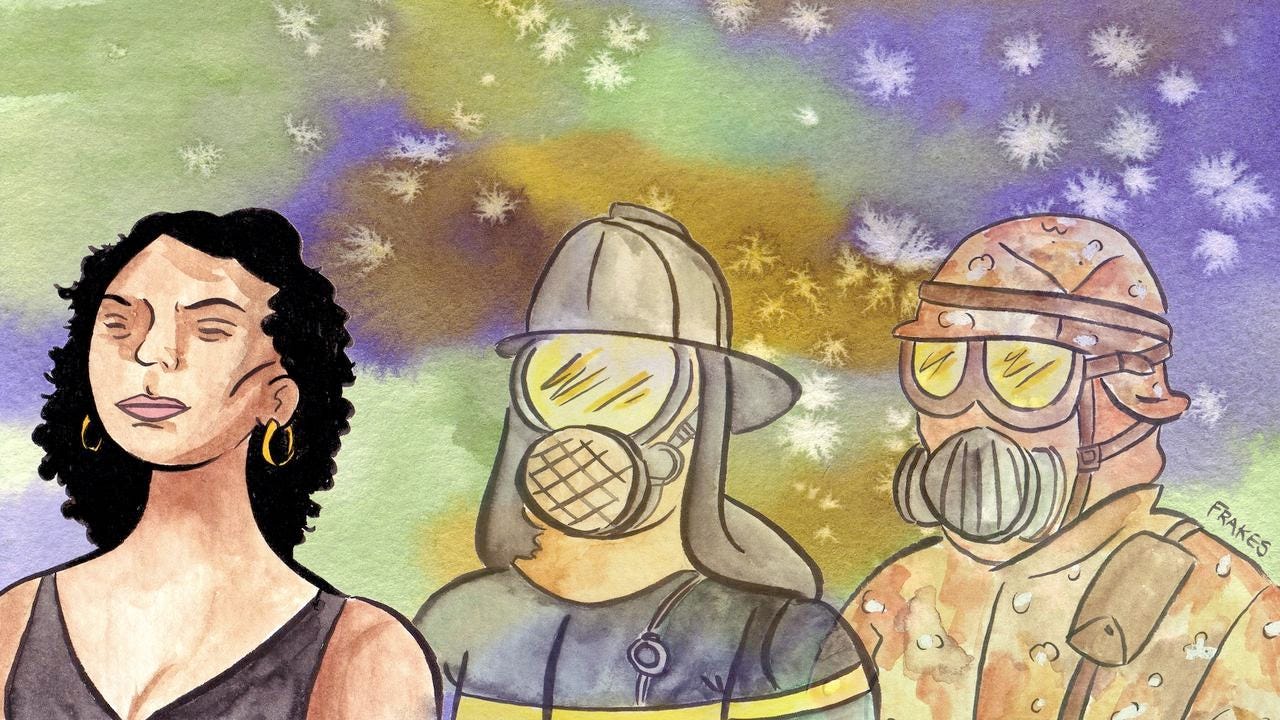The Woman Who Played With Fire
Sophy Medina conquered boot camp and mastered the Marine Corps. Now she faces her toughest challenge yet: breaking into the white- and male-dominated New York City Fire Department.
June 2008: Night has spilled into morning. Sophy Medina and a friend are coming home from a party, both buzzed and each dressed in one of their more cleavage-bearing outfits. They walk up to the door of Medina’s apartment and, while fiddling around with her keys, Medina turns around to face a mugger holding a gun, its nozzle inches away from the right side of her chest, slightly below her collarbone. He asks for her purse. She immediately gives it to him. A second mugger screams at her friend to hand over her valuables; she reaches into her purse and gives him her phone and money. The gun-toting mugger’s free hand lightly grazes Medina’s inner thigh, hinting that the worst might still be to come.
“At that point I thought, ‘Me and this dude are both going to die before that happens,’” Medina says. After four years in the Marine Corps, Medina can hurt someone quite easily, gun or no gun. It’s hard to say how she invoked that strength with merely a look, but …
Keep reading with a 7-day free trial
Subscribe to Narratively to keep reading this post and get 7 days of free access to the full post archives.




